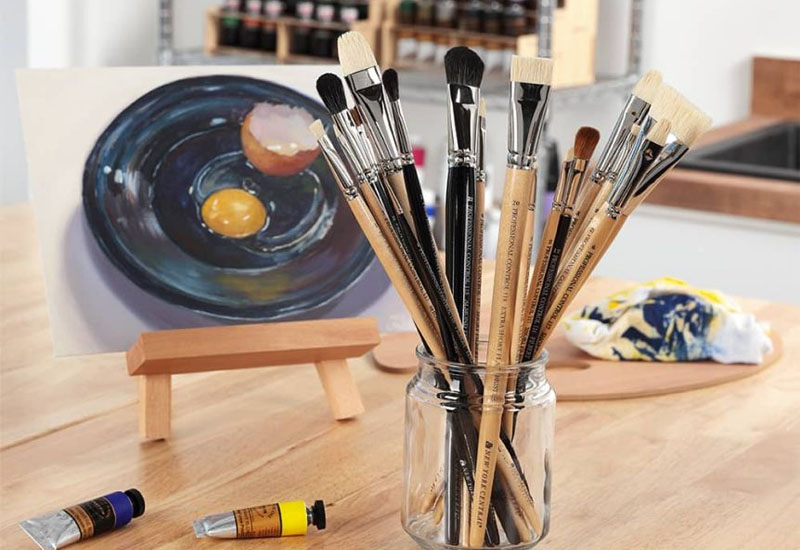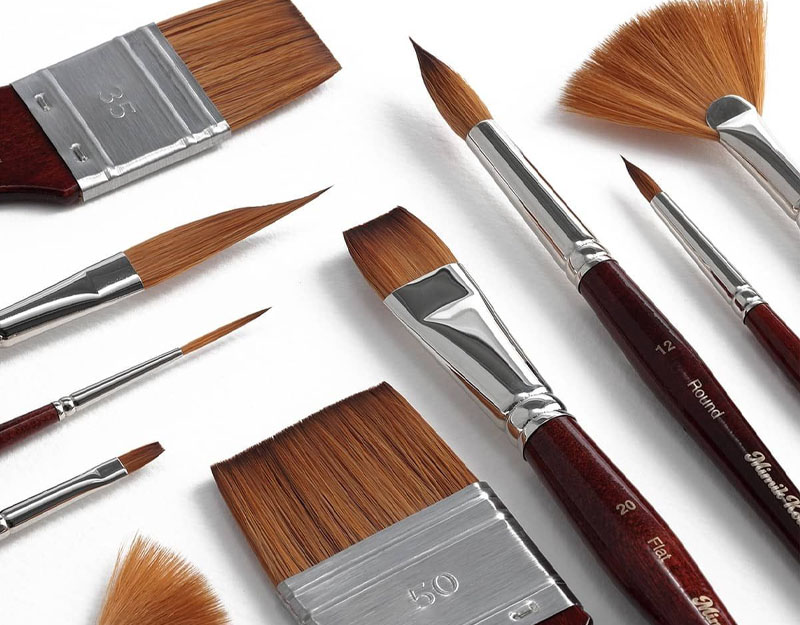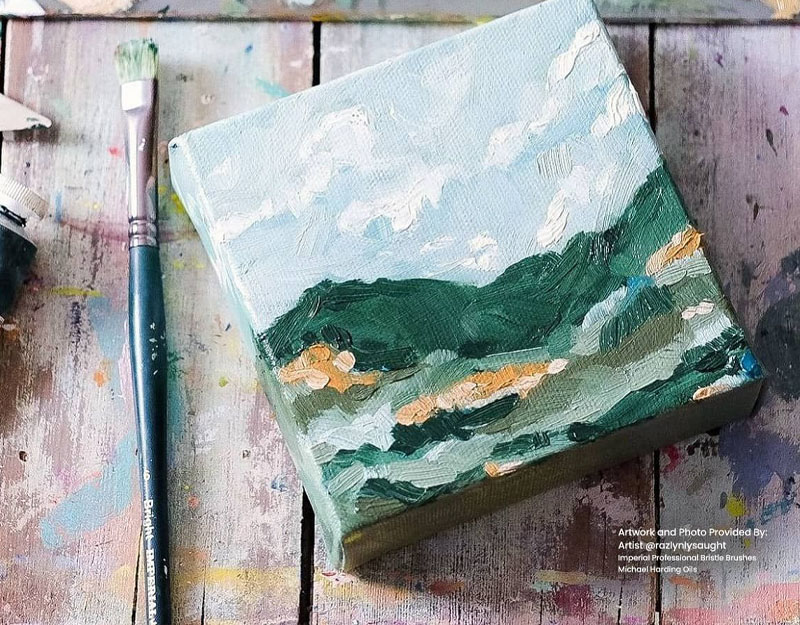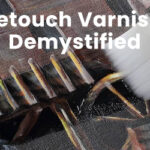Synthetic vs. Natural Brushes for Oil Painting
Exploring the Differences: Synthetic vs. Natural Brushes for Oil Painting
As a painter, you know how important fine art brushes are in achieving the desired effects in your artwork. However, with so many options available in the market, it can be difficult to decide between synthetic and natural hair brushes.
In this blog article, we’ll discuss the differences between synthetic and natural hair to help you decide which is best for your painting needs.

Synthetic hair brushes
The first synthetic brushes were developed in the 1950’s, for many decades following their invention synthetic brushes were infamous for their habit of warping and melting when coming into contact with certain oil painting solvents.
Despite this, the brushes took off in popularity for their versatility among other mediums such as watercolors and acrylics. Many artists would even favor synthetic brushes over natural brushes for acrylic painting, believing that acrylic paints could damage the delicate hairs of natural brushes.
Synthetic brushes quickly turned into the work-horse that they are today. Overall, synthetic filaments made of nylon or polyester tend to be stronger, easier to care for, and cheaper than natural hair brushes because of their ability to be mass produced without the need for fur trading.
Synthetic hair oil brushes are ideal for those who want to achieve a precise and consistent stroke, and they’re particularly useful for creating sharp edges and detailed work because of the synthetic filaments’ high spring-back and resistance to damage.
Synthetic fibers that mimic the properties of natural kolinsky-sable hair have been especially sought after. The Siberian weasel’s tail hair has been extremely difficult to come by because of the isolation of their native environment. Many artists craved animal friendly, vegan alternatives.
Yet, a typical synthetic taklon brush would not do. Kolinsky-sable is particularly popular among watercolorists for its ability to hold large amounts of water, making it easier to create large washes of paint. Most synthetic brushes are not able to mimic the absorption capabilities of natural hair.
So, artists had two main problems on their hands when it came to synthetic brushes.
- The first being that they were ineffective with oil painting solvents, and the
- The Second being their inability to hold as much paint and water as natural brushes
While these problems still hold true about some synthetic hair brushes today, brush makers and product developers have put their best foot forward into creating brushes with solutions.
Nowadays the brush market is ripe with both synthetic brushes made to withstand oil paints and solvents such as the Black Swan Synthetic Red Sable brushes and brushes made to absorb large amounts of water such as the Mimik Kolinsky Synthetic Sable Brushes
Natural hair brushes
Some artists, on the other hand, will always prefer natural hair oil brushes over synthetic. They can be made from a wide variety of animal hair, such as hog, sable, or squirrel, and have been used by artists for centuries. They’re known for their softness and flexibility, which allows them to hold more paint and some artists favor them for their smooth, more organic stroke.
Like seen in the absorption capabilities of kolinsky-sable brushes, the type of natural hair used determines the characteristics of the brush. For instance, hog hair brushes are stiff and can handle thicker paints, while sable hair brushes are softer and better suited for thinner paints.
Natural hair brushes require more care and attention than synthetic brushes, but they can last a long time if properly maintained. While synthetic brushes offer a vegan, animal-friendly alternative, some artists prefer natural brushes as a more sustainable option because of synthetics’ use of non-biodegradable plastic filaments.
So, which is best for painting?
It really depends on your personal preference and painting style. Synthetic brushes are a great option for those on a budget or who need a brush that can handle a variety of mediums. They’re also a good choice for those who prefer a consistent stroke and sharp edges.
Natural hair brushes, on the other hand, are ideal for those who want a brush that can hold more paint and create a smoother, more organic stroke. They’re also great for artists who prefer to work with thicker paints and who are willing to invest more time and effort in their brush maintenance.
In conclusion, synthetic brush hair has come a long way in its ability to imitate natural hair. However, natural hair brushes still offer a unique experience that can’t be replicated by synthetic brushes.
Ultimately, the choice between natural and synthetic hair brushes comes down to personal preference and the specific needs of your painting style. We hope this article has helped you make an informed decision on which type of brush to use for your next painting project.
Some Questions and Answers
Are synthetic or natural brushes better for oil painting?
Advancements in synthetic hair have made the difference between synthetic and natural hair negligible. Either can be used for oil painting, depending on the artists preference.
What are the advantages of using a synthetic paintbrush instead of a natural paintbrush?
Synthetic brushes are a great option for those on a budget or who need a brush that can handle a variety of paint thicknesses. Synthetic brushes are also easier to clean and maintain as opposed to natural hair brushes which require a more in-depth cleaning process.
MORE RESOURCES







